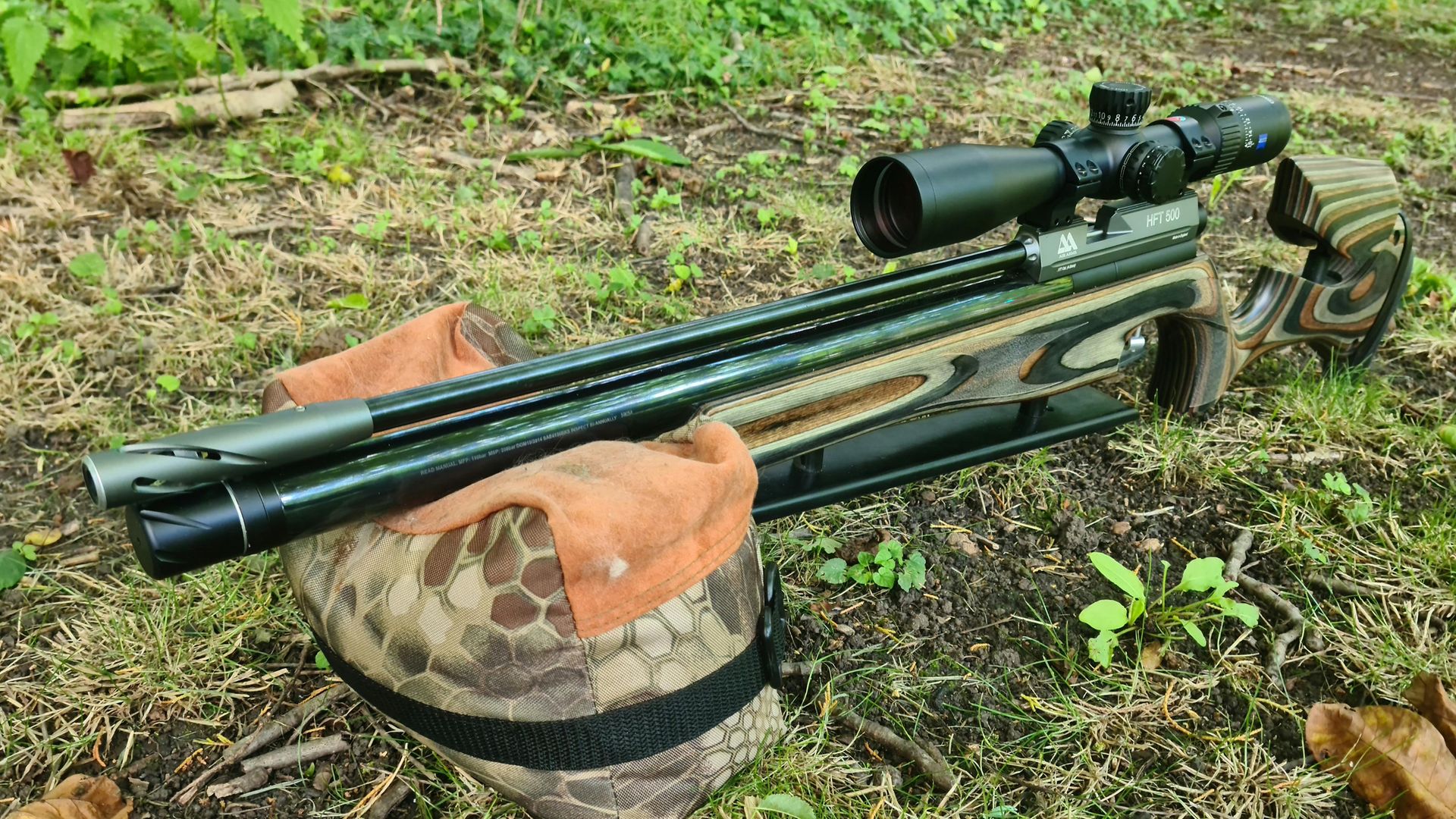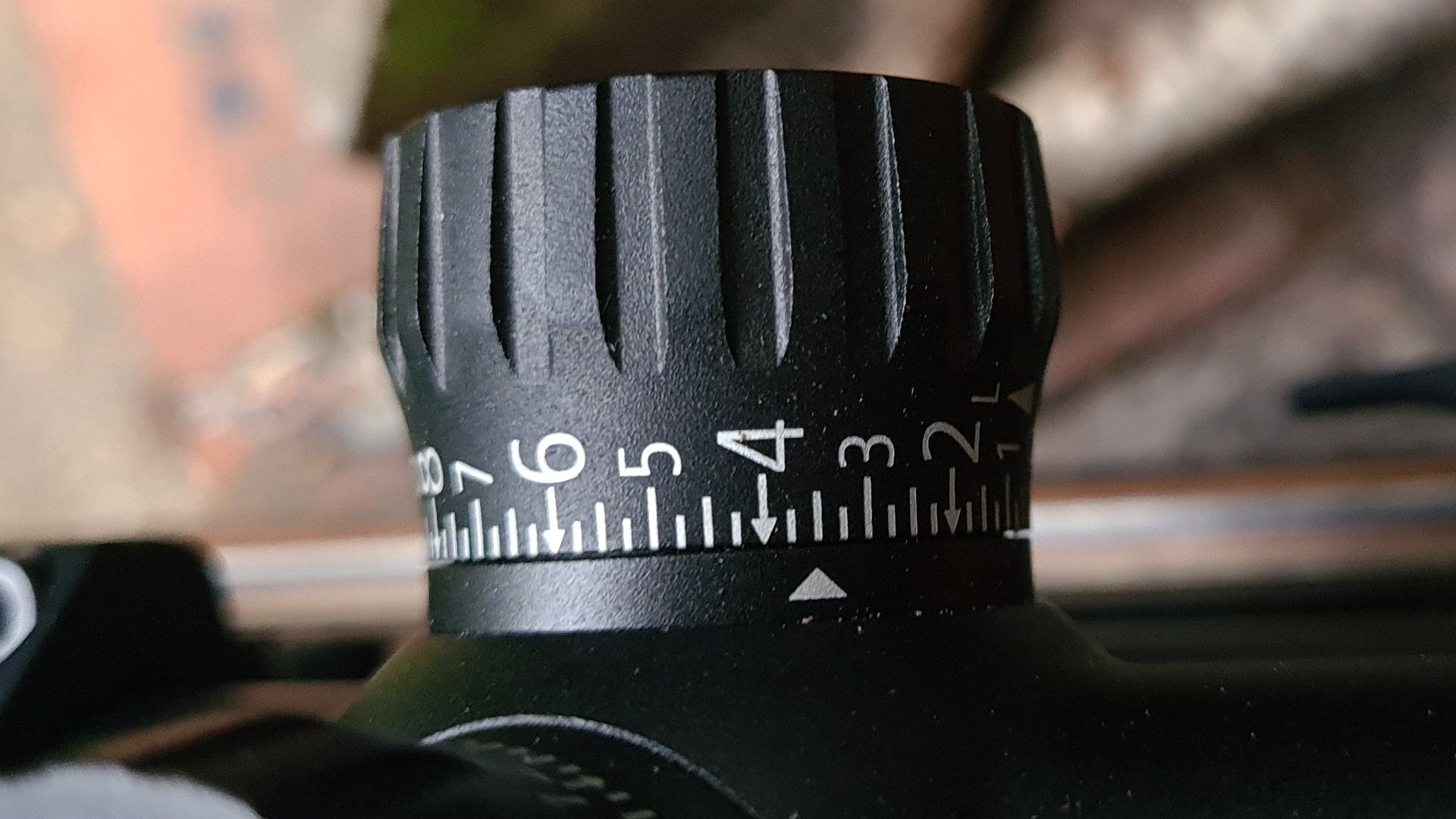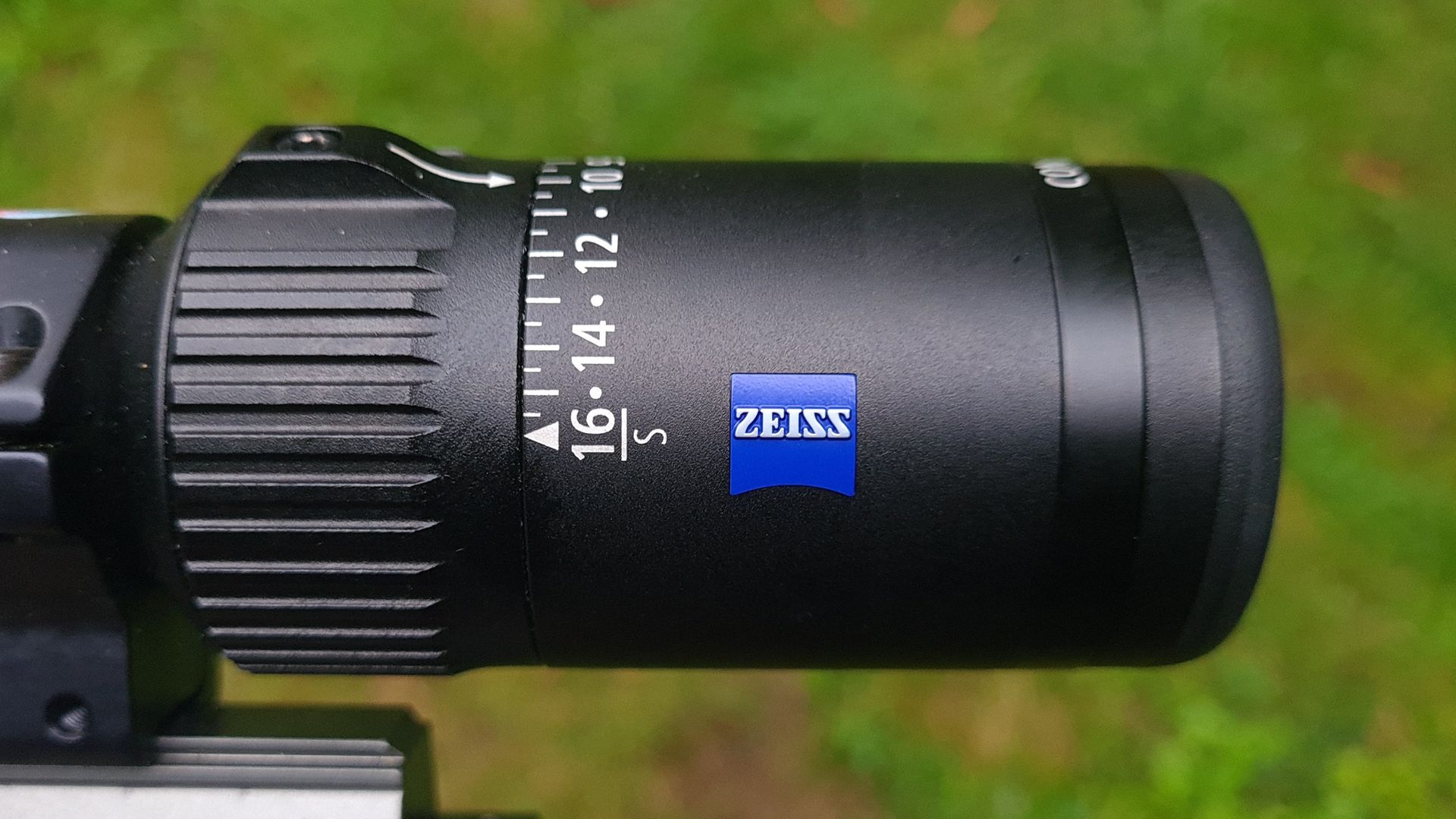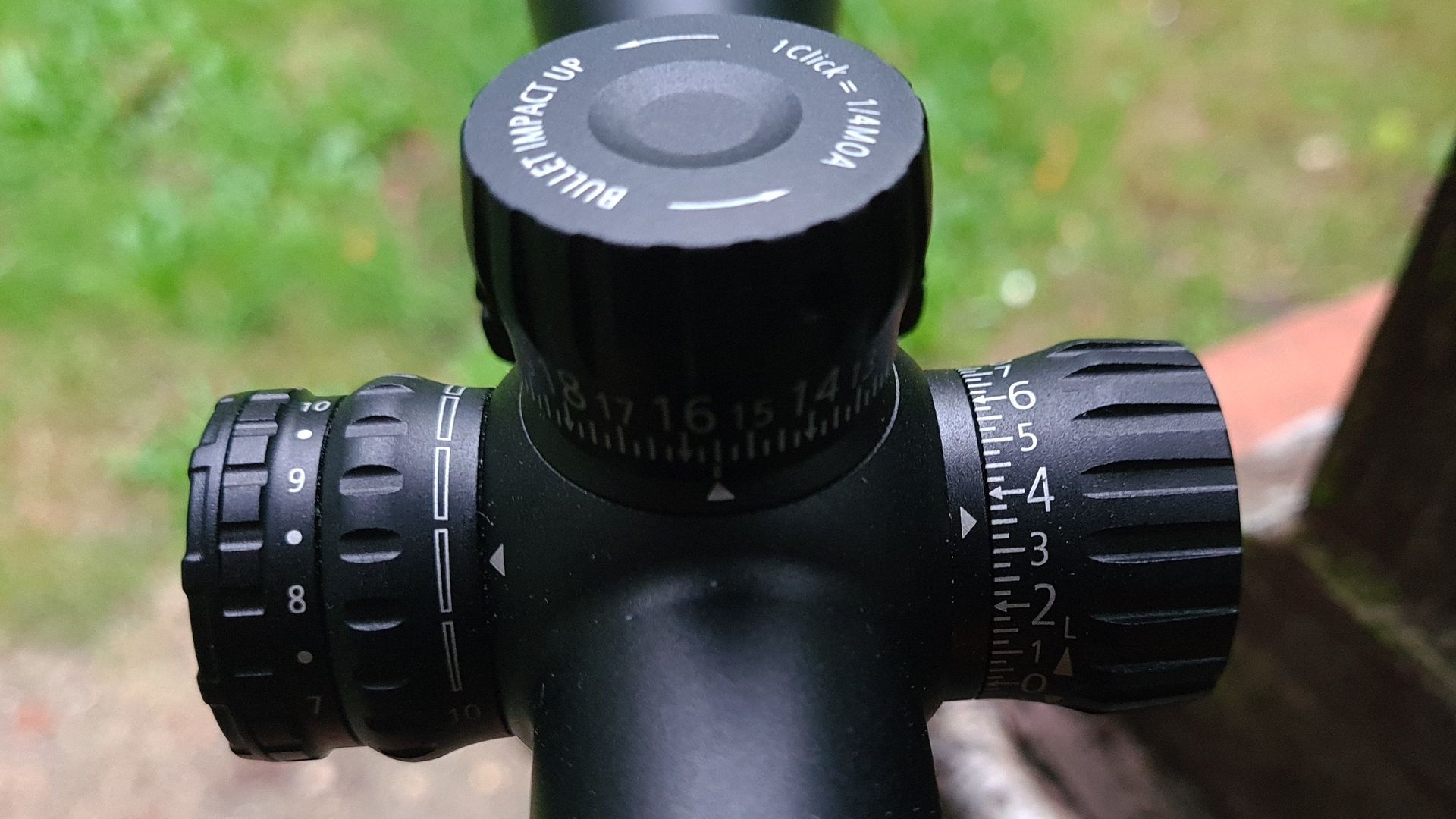Gary Chillingworth explores the supreme quality of the Zeiss Conquest 4, 4-16 x 44 scope in this detailed top-end riflescope review
One of the questions that I get asked the most is: ‘Why do you need a high-end scope for HFT and hunting? Why do we need to spend £1K-plus when we are only shooting out to 50 yards?’
This is a great question, and until recently, my answer would have been, ‘You don’t!’. Then I was sent the Zeiss Conquest 4, 4-16 x 44 scope and I am now starting to revaluate what I have thought for many years.
I am not going to go into the ins and outs of this scope because both Dave, the Editor, and Terry, the Grand Poobah, have reviewed it and they will always do a better job than me, but I will give you a quick rundown of the capabilities of this scope, before we get to the really interesting stuff.
OK, first of all, it’s from Zeiss and in the world of optics you don’t get better than that. They have been around since 1846 when Carl Zeiss opened a shop in Jena, making microscopes. Over the years, they have made everything from scopes to binoculars, everything that has a lens, and have recently agreed to supply optics to the successor to the Hubble space telescope.
So, it would be fair to say that this company has some provenance and knows a thing or two about making optical instruments. The Conquest 4 is their latest venture and they are now producing scopes that are great for HFT and close-range shooting.
 credit: Archant
credit: Archant
Zeiss Conquest 4
So, let’s break down the scope into sections and see why spending the extra money is an advantage and whether or not this could be the correct scope for you. There are several versions of the Zeiss Conquest 4, but the one that I have on test is the 4-16 x 44, with an illuminated ZBi reticle and a cost of £995.
Recently, there has been a big move toward smaller objectives, but for many years, the 44mm was certainly king of the hill, and this scope will almost probably take the crown of the 44s. When you look through the scope, the first thing that becomes abundantly clear is the definition. When I raised it to my eye, and looked through the scope, everything came into sharp focus and not just in the centre – one of the most impressive things about the Conquest 4 is the quality across the lens.
There was no distortion, and with the cross hairs in the kill zone, I could use the other quadrants of the scope to watch the grass and help to gauge the wind. The ocular end of the scope’s lens is also great, and the fast focus has a huge range of adjustment, so unless you are as blind as a bat, there is a good chance that you can set the scope up so that you will not need your glasses to shoot, and this can be a huge advantage.
Not having to look through the extra lens of a pair of spec’s will reduce error and on a cold and foggy day, you won’t have to worry about your glasses steaming up. Speaking of fogging up, the Conquest is nitrogen-filled and the coating on the lenses are two of the finest; the Zeiss T-star is there to assist with light transmission, and LotuTec which helps with visibility in poor conditions.
 credit: Archant
credit: Archant
Testing the Zeiss Conquest 4
To start the testing, I set out my optics test card at 50 yards and started to look at it over a few days. I tested it with the sun behind, the sun directly on it; I tested it at dusk, and on a foggy morning, and I was very impressed. With the sun behind the target, there was a small amount of lens flare, and if this were going to be my main shooting scope, I would definitely buy a sunshade, but it only flared when the sun was almost shining into the scope.
The light-gathering was extremely impressive and as the sun went down, and it got darker and darker, I used my lux meter to measure how much light we had left. With a white face plate, I couldn’t make out the target with my naked eye, but when looking through the scope, not only could I see the plate, but I was also able to see the kill, and shoot the target. The light transmission in the scope is amazing, and the blurb says that with a combination of grind, coatings and precision machining, the light transmission is 90%. Now, sometimes, when you read things like that, you need to take it with a grain of salt, but in this case, I believe it.
 credit: Archant
credit: Archant
Advantages of the Zeiss Conquest 4
One area of my home range is very dark and when I place a target here at dusk, I can normally make out the outline of the kill zone, but that is it. With the Zeiss, though, not only could I make out the kill, but also the individual pellet strikes, and for HFT, this is a huge advantage.
If you have a target at 45 yards, most shooters will place their 45-yard aimpoint low in the kill, and this is so that they can cover everything from say 39 to 45 yards. So, when you look at the target, with good optics you can see the paddle and if all the strikes are low in the paddle, then you know it’s a full-length target. If they are high on the paddle, you know it’s nearer 40 yards. The Conquest makes this sort a of rangefinding a doddle.
The next thing is the sheer build quality. When you hold the scope, you can tell that this is a premium product. It is rated to carry nearly two kilos of kit, so you can attach a night-vision scope, lamp, bread-maker, small car and anything else you want, and it and it should not affect your aimpoints. Also, when you are clicking the turrets, there is a very positive click and you know that these will not move with time.
The scope’s reticle is also very impressive. I have the ZBi ret, and this is a fairly fine reticle with a lovely illumination of the cross hairs. I must admit, I am not normally a fan of illumination, but this is very unobtrusive and there is no bleeding – it’s just as if the cross hairs have been painted red and are still sharp and precise
To adjust the ballistic-style turrets, you raise and twist with 60moa of adjustment for wind, and 80moa for elevation in ¼ moa clicks. You also have parallax adjustment that goes down to around 10 yards – make sure you order this because some scopes come with a fixed 50-yard parallax – but it would have been nice if there were PX yardages on the scope and not just lines.
 credit: Archant
credit: Archant
Conclusion
Why should we buy a scope like this? Well, for me, the added clarity, build quality and sheer light gathering makes this scope a real winner. I threw it on my HFT 500 and shot a 56 at M.A.D. on a test day, first time out. So, is it the best scope ever made, and is it worth it? To be honest, if you have the money then – yes. I know a grand for a scope is big money, but it will give you an advantage.
With the Conquest 4 I can lie down and look at targets in higher definition than with other scopes, and if I can see a target better and see the history and the movement of the plants around it, this is a huge advantage.I also like the name ‘Zeiss’ because it’s certainly iconic and I have no doubt that these scopes will hold their value. Also, with the high-end quality, if you place a scope like this on a Weaver rail, you could transition it from a .308 to a sub 12 ft.lbs., and never worry about damaging the scope.
Finally, I took the scope to the Nationals and everyone wanted to look through it; Jason Lockett stated that it would be great for bench rest; James McLachlan (Former World and National Champ) wants one, and Theresa Reed who is probably the country’s top lady shooter, has not only ordered one, but she is also now a stockist for the company, and if you need help picking the best Zeiss for you, you can contact her through Kibworth Gun shop.
This is a great scope for HFT, plinking and hunting and if you have the money, then you will have an amazing scope to place on your rifle.
 credit: Archant
credit: Archant